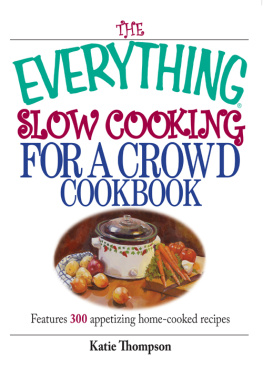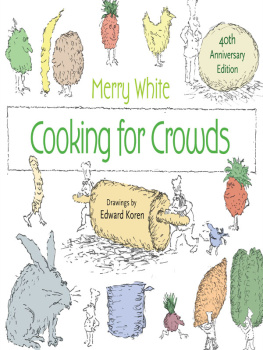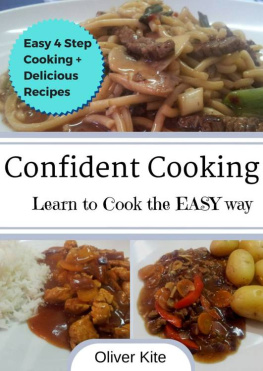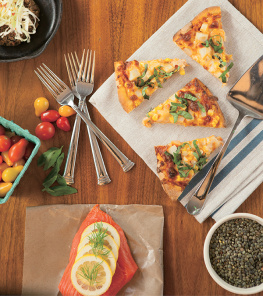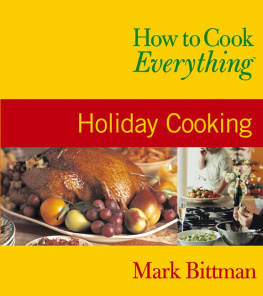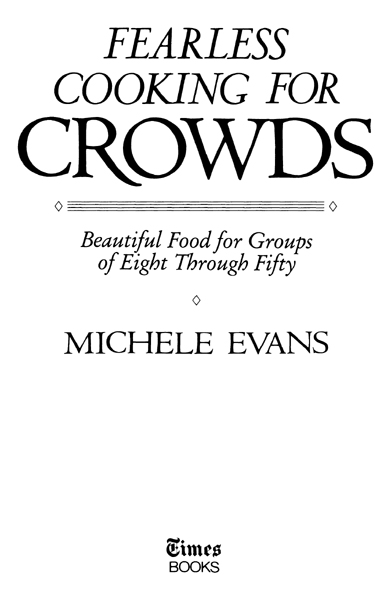O THER B OOKS BY M ICHELE E VANS
Michele Evans Recipes for Beautiful Soup
Michele Evans All Poultry Cookbook
Michele Evans Easy Seafood Recipes
Michele Evans Recipes You Can Afford
The Salad Book
The Slow Crock Cookbook
American Cuisine Minceur
Fearless Cooking for Men
Fearless Cooking for One
Fearless Cooking Against the Clock
Fearless Cooking for Company
Copyright 1986 by Michele Evans
All rights reserved under International and Pan-American Copyright Conventions. Published in the United States by Times Books, a division of Random House, Inc., New York, and simultaneously in Canada by Random House of Canada Limited, Toronto.
Library of Congress Cataloging-in-Publication Data
Evans, Michele.
Fearless cooking for crowds.
1. Quantity cookery. I. Title.
TX820.E83 1986 642.4 85-40738
eISBN: 978-0-307-80112-8
Coordinating Editor: Rosalyn Badalamenti
v3.1
F OR N ANCY D USSAULT
A CKNOWLEDGMENTS
I am indebted to the following family members, friends, and acquaintances for sharing their recipes, imagination, knowledge, and enthusiasm with me on the subject of cooking for crowds: Ellie Ashworth, Margot Bachman, Diana Backus, Ernesto Ballarin, Frances Bangel, Sir Charles Batchelder, Joelle and William E. Burrows, Midge and Bobby Connors, Barbara Cossman, Nadia Cossman, Raymond Etchenis, Mary Eustis, Ima Evans, Doris Farrington, Edwina Farrington, the late Sam Gallu, Gray, Steven Gregor, Bobbe Hart, Penelope Jago, John Larson, James Levi, Julie and Bruce McClennan, the late Emily McCormack and Edward McCormack, Chris Pappas, Shirley Petrofsky, Sylvia Putziger, Angel Noo Ramirez, Robbie Robinson, Daniel Rospond, Fulvia Sesane, the late Sylvia Shapiro, Martha Rose Shulman, Bruce Thomas, Katharine and Kevin White, Judy Witty, Jack Yogman, and Diane Young.
Eternal thanks again, to Tully Plesser and Esther Newberg for always being there, along with my editors, Rosalyn Badalamenti, Ruth Fecych, and Kathleen Moloney.
Contents
Introduction
T he wealthy Palm Beach dowager who once said that all you needed for a great party was a bowl of salted peanuts and lots of whiskey may have been right in her time. But things have changed since the days when a cocktail party meant cheese and crackers and dinner for more than six invariably called for a ham, roast beef, or turkey.
Travel, venturesomeness, education, interest, and availability where food is concerned have broadened American awareness and taste for a wider variety of foods than was ever imagined twenty years ago. From the elite restaurant to the modest motel-chain dining room, we are now routinely exposed to multidish salad bars with a tempting variety of dressings, ethnic food, fresh seafood, choice meat cuts, and fresh poultry, legions of pasta dishes, freshly steamed baby vegetables, elaborate pastries, and exotic fruits flown in from other continents.
The nations catering establishments have also contributed substantially to the finishing of American appreciation for large-scale entertainingteaching us at weddings, cocktail parties, corporate conventions, religious functions, charity receptions, testimonial dinners, political inaugurations, celebrity roasts, alumni homecomings, award dinners, cruise ship buffets, special holiday celebrations, boutique openings, and birthday parties right at home just how exciting, original, and delicious cooking for crowds can be.
In theory, cooking for a crowd should be a celebration, an event to be anticipated with excitement and pleasure. Unfortunately, cooking for eight or more guests often has an intimidating effect on many otherwise confident cooks. The same person who approaches a dinner for four as a routine exercise can find serving eight, twelve, sixteen, twenty-four, or more to be a frightening challenge. The mere thought of cooking for a large group seems to conjure up images of overflowing shopping carts, huge cauldrons bubbling over onto the stove, crowds of people lined up at buffet tables where the main course has just run out, the family dog gobbling up the pt, a no-show bartender, and mountains of dirty dishes after the last guests have departed at 2 A.M .
We are at once bewildered and overwhelmed as we consider the components involved in cooking for crowds: guest lists, budget, menus, shopping, serving methods, weather, tableware, serving dishes, pots and pans, flower arrangements, lighting, help, and service, storage space in the refrigerator and freezer, the bar, timetables for the meal, cleanup, and even where the cars will park. And above all, we want our celebration to be a stunning success.
Things are bound to go wrong. How can these things be anticipated, and what early warning systems can we rely on to avoid disaster?
In real estate we are told that the three most important elements for success are location, location, location. In cooking for crowds, the magic ingredient is organization, organization, organization.
Through the chapters that follow on organization, strategic planning, and the recipes themselves, I hope to turn the quite normal feelings of anxiety and panic over the thought of cooking for crowds into confident, fearless entertaining.
How many constitute a crowd? As many as three can, as the adage goes. For most people, though, cooking for a crowd is cooking for double or more than is usual in our day-to-day lives. In this book, the first group to constitute a crowd is eight. This number was selected because of the large and ever-growing number of households made up of single individuals, couples, and families with one or two children. For these households cooking for eight represents a substantial increase in servings.
Most of the recipes here that are for eight can be doubled to serve sixteen, so those adept and comfortable at cooking for eight should consider the recipes in this category, too.
The other recipes are listed in the various food categories for twelve, sixteen, twenty-four, thirty-six, and fifty, often with instructions for doubling or cutting the recipes in half.
Because of the limited space in our apartments and homes, kitchen logistics, equipment, and cost, twelve, sixteen, and twenty-four are the numbers most of us can realistically consider manageable crowds in our homes. But for those unusual occasions, Ive included a substantial number of recipes listed for thirty-six and fifty as well.
Cooking for a large number will take extra time, careful systematic organization, and scheduling, and things will go wrong. Being flexible and having a positive attitude, common sense, a sense of humor, and imagination can solve almost any problem.
To cite an example: Last year a friend was remodeling his home, and he had planned to have the work completed in time to serve his annual Thanksgiving sit-down dinner with several tables on his expanded new terrace around his new pool. He had invited thirty people. Just a week before the event, the new kitchen, terrace, and pool were all far behind schedule. Not only could he not have the tables around the pool, he couldnt even cook the food in the unfinished kitchen. Pandemonium and dust were everywhere, yet he was determinedand resourceful. He called up all the guests and asked them to bring their own dinner plates, flatware, glasses, and napkins. He set up unmatching tables in one long row in the driveway, and covered them with the same colored tablecloths with a flower arrangement on each. The food was cooked at a friends home, and served buffet style from two card tables under trees at one side of the driveway. Guests arrived carrying their own tableware, which ranged from paper plates, plastic knives, forks and spoons, styrofoam cups, and sheets of paper towels to elegant china, silverware, Baccarat crystal, and monogrammed linen napkins. This colorful improvised dinner turned out to be such delightful fun that many guests are sorry that it wont be the same next year. The imagination, sense of humor, common sense, and positive attitude paid off.








